The Speaker recently interviewed Dr Shane Gero, a marine biologist who has been studying sperm whales in the Caribbean for the past 10 years. We talked to Gero

about his research in Dominica as well as his current project, which represents many firsts in the science of sperm whale communication. Gero’s findings offer a greater understanding of what happens when sperm whales talk to each other.
The whales, Gero has found, are using language for many communicative purposes–including, it seems, greeting other whales using first and last names. Also, sperm whales from different parts of the world and from different social groups speak the differently. Not only do they speak their language differently, they also exhibit varying cultures depending on where they live and which social group they belong to.
“The focus of my study has been at the level of the individual whale.” Gero told us. “We’ve been able to follow these animals year after year–the same about two dozen families–some of them we’ve spent hundreds of hours wit.”
“We’ve collected a huge data set on who has spent time with who–but also, from a communications standpoint, who says what to whom. And that’s really a first: being able to look at individuals chatting with each other at a conversational level.
“This new study that’s happening in the next couple of years is, for the first time, going to be able to place those conversations into a context in the open ocean.”
The new project takes Gero’s previous decade of experience with sperm whales one step further, and will serve as a lead-up to a fuller understanding of what sperm whale language is.
“Previously we would record animals, and be able to figure out who was saying what, but we didn’t know where they were relative to each other, or the ‘when’ context… in terms of when they were actually talking to each other…
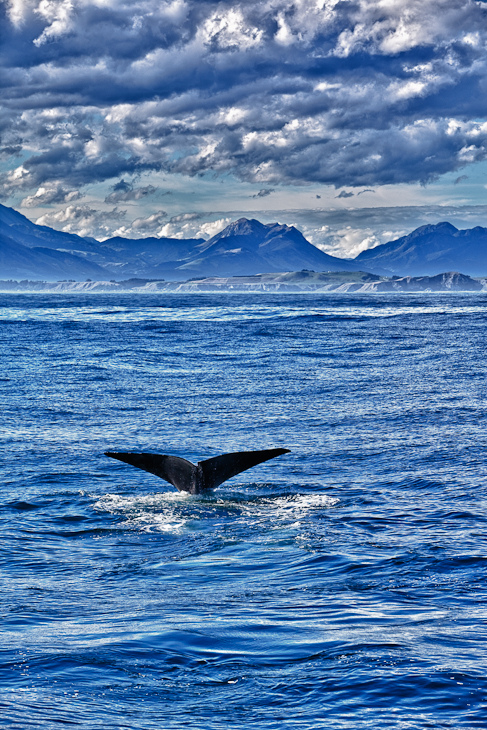 “We’ve done well in the last 10 years to answer the ‘who’ and the ‘what’ of these conversations. The ‘where’ and the ‘when’ are the subject of the current research. Hopefully this will lead us to one day answer the really interesting ‘why’ questions. ‘What are they saying to each other? What does it all mean?'”
“We’ve done well in the last 10 years to answer the ‘who’ and the ‘what’ of these conversations. The ‘where’ and the ‘when’ are the subject of the current research. Hopefully this will lead us to one day answer the really interesting ‘why’ questions. ‘What are they saying to each other? What does it all mean?'”
Gero gave us some details about sperm whale society. These whales live in a hierarchical society, and spend their day to day life in what the researchers call “social units.” In Dominica, there are some 400 sperm whales, and all of them belong to one matriline–grandmothers, mothers and daughters–which spend their full lives together. The Dominica group spends most of their lives within 20 miles of the shore.
“These animals in the Caribbean are really island-associated animals,” said Gero of the group. “It’s really easy to call them families, because that’s what they are.”
“On the average day, there’s only one family off the coast of the island. But every now and again, two families will join up and spend anywhere from a few hours to a few days together socializing.
When talking about language, Gero told us that we must keep in mind that sperm whale language is very different from human language–and is also different from the language of other whales–including the language of the more familiar humpback whale.
“Language is a big question. Language comes with syntax and it comes with meaning and orders, and we haven’t figured all that out yet. But what we do know is that sperm whales use a system of clicks to communicate with each other.
“It’s kind of like Morse code. So, some calls sound like this: ‘tap-tap-taptaptap,’ where others sound like this: ‘taptaptaptaptaptaptap.’ And different rhythms are used at different times. Animals exchange these back and forth, kind of like you would using Morse code.”
Sperm whales throughout the world exhibit common features of communication, but also exhibit variation, Gero explained. The variation seemingly depends on the geographic origin of a particular whale, among other factors, and serves the whales as a social marker.
“So, what’s interesting about variation in the world is that animals in the Caribbean sound different from animals in the Mediterranean, and they sound different from animals in the Gulf of Mexico and so on.
“At least in the Atlantic, it seems like it’s geographic. So all the animals in the Caribbean sound very similar, but they sound different from the animals in the Med–that sound very similar.
“But in the Pacific it’s different. In the Pacific you actually have different sperm whale dialects living in the same area. So some of the animals off the Galapagos sound one way, and some of the animals sound differently. But what’s really neat about that is that they seem to use these dialects to segregate their society.
“So as a whale that means making a certain type of coda,” said Gero. Codas are patterns of clicks used by whales to communicate.
Gero offered an example of the individuals that live in these segregated sperm whale groups. “I only spend time with animals that make that same sound. It would be similar to living in a multi-cultural country like Canada or the United States, but then only socializing with anyone who speaks the same language as you.”
“In the Caribbean we hear a lot of a one-plus-one-plus-three coda. So it sound like this: ‘tap-tap-taptaptap.’ And that’s the only place that it’s been recorded–in the Caribbean. And all the animals make it very similarly. So, we think that it acts as a marker of ‘I’m from the Caribbean.’ Whereas in the eastern tropical Pacific, the Galapagos, the coast of Chile and Ecuador–there are several different coda repertoires.”
Gero contrasted this five-part coda with the five-part codas used by other whales around the world.
“One of the groups makes very regularly timed codas. So, they’ll make a five-regular, which is five clicks that are very evenly spaced, so it sounds something like this: ‘tap-tap-tap-tap-tap.’ And they also make a six-regular and a seven-regular, and so on.
“But then there’s another dialect that’s all plus-one. So, rather than making a five-regular, they would make a four-plus-one, which sounds like this: ‘taptaptaptap-tap.’ And they also make a five-plus-one and a six-plus-one and so on.
Gero and his fellow researchers assume that the whales are using their calls to identify themselves on a first and last name basis. The assumption is based on the common usage of a one-plus-one-plus-three coda in a similar way, while each individual whale uses a five-R in a slightly different way. “It seems as though they sort of have this nested, hierarchical recognition, so there seems to be the five-R coda, which you hear everywhere in the world.”
Gero then explained the first names.
“It has the variability to function as an individual identifier,” said Gero. “It’s potentially used to mark differences between individuals. So if you’re looking within an family, you can actually tell the individuals apart by how they make that coda. So its kind of like a first name. And, at least in the Caribbean, it seems that they use different codas that are all four clicks in length, but each family unit has a different four click coda. So that’s sort of like a last name. And then we know for sure that the animals in the animals in the Caribbean use the one-plus-one-plus-three, and that’s the only place that has been recorded. So we think that it probably functions in a way of marking their geographic origin or their cultural group–the vocal dialect that they have. So they have this nested kind of first name-last name cultural group.
“In the same way, I would say that my first name is Shane, my last name is Gero, and I come from Canada.”
Gero told The Speaker that testing the function of these calls is a matter of his current research. They are looking at how the animals use the calls and when they use them. The whales may use the calls like the bottlenose dolphins being studied by the Sea Mammal Research unit at the University of St Andrews, which have been observed exchanging their calls when meeting at sea. “They actually say, ‘Hey it’s me’–‘Oh, hey, it’s you. Great,'” commented Gero.
Sperm whales not only vary in the languages they speak, they vary culturally based on what group they live among.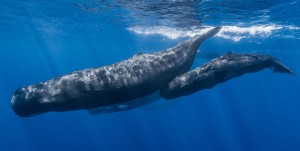 “And the neatest part about them is that these vocal clans–these whale cultural groups that use these different dialects–don’t only segregate their society socially, but they also behave differently. They have different movement patterns and different foraging habits and reproductive success, as it turns out. And so they really are really equatable to human ethnic groups.”
“And the neatest part about them is that these vocal clans–these whale cultural groups that use these different dialects–don’t only segregate their society socially, but they also behave differently. They have different movement patterns and different foraging habits and reproductive success, as it turns out. And so they really are really equatable to human ethnic groups.”
When we asked Gero about whether different codas were used by the animals to represent various parts of their lives, he gave us an idea of where his research was headed.
“That’s really what I’m studying in Dominica, because it’s the first time we’ve been able to follow families over such a long period of time, and hear them communicate with each other in different contexts.”
Although the “why” of sperm whale calls is a matter of Gero’s future research, he was willing to offer some educated guesses.
“The ocean is mostly a dark space on a big-area scale of thousands of square kilometers in which there is not a lot of stuff. And the most important thing that you have with you is your family members. And so, keeping track of where your family members are as individuals–whether it’s your mom or your baby-sitter or your aunt or your grandmother–is important.
“But then even more importantly, its critical to figure out what family you’re coming up on. So if one family is swimming north and the other family is swimming south, they need to figure before it’s too late whether or not they want to spend time with each other or avoid each other, and whether or not they recognize that family group.
“So having that layer of recognition to recognize individuals and families and the society that they come from is really important when you live in a vast, dark ocean,” said Gero.
This has a lot to do with feeding habits, explained Gero.
“Sperm whales feed on squid, and squid is very patchily distributed in the ocean. And so, you don’t want to spend time in a bigger group with animals that you don’t know, in order to deplete that resource. So, we know that sperm whales–at least on the day to a week scale–travel around basically following the squid that they’re trying to eat. And so, in order to maximize the amount of food you get, you want to minimize the amount of animals that are eating that patch of squid.
“So, it’s important to find out who is there in order to maximize your foraging success in some respects.”
In order to study the language of sperm whales, Gero and his team use animal-borne sound and movement tags–technology from Dr. Peter Madsen’s world-leading Marine Bioacoustics Lab.
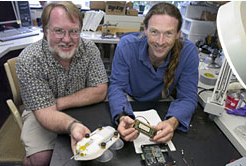
“D-tags were pioneered out of Woods Hole Oceanographic in the US. They are being heavily used at [Gero’s] lab at Aarhus University,” Gero told us.
“Basically, they’re about the size of your cell phone. And it works like your cell phone in some respects. It can measure the 3-d movement. So, it’s kind of like if you’re looking at a picture on your phone, and you turn your phone sideways: the picture orients itself and gets bigger. That’s because the phone knows that it’s being turned sideways. And these tags know that as well. So, we get 3-dimensional fine-scale movement by putting them out on the animal.
“But they also have two little microphones at the front, so we also get really high-resolution stereo sound.
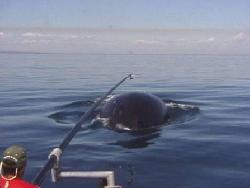
“The tags get deployed with a really long pole, and they stick to the whales with four small suction cups. So they don’t implant into the whale. You basically poke the animal with a long stick, and the suction cups stick onto the back of the animal, and then they can last for about two days. And then they computer inside tells the suction cups it’s time to release, and it lets a little bit of water into the suction cup and the suction cup falls off, and the tag floats back to the surface.
“And then it has a little VHS transmitter in it, and that allows us to track it down. Just as other biologists in Africa tracking lions or elephants would.
“And what this gives us, if we put out three of them at the same time, or five of them at the same time on a family of whales… If the family of whales is only seven animals, we get all the relative positions of all the adult females in the family. And so we get all of the exchanges of the calls between them as well. So we know that Pinchy–a female–just dove and has left her calf, Tweak, at the surface, and is now calling to Fingers, whose coming back up from the deep, and so it gives us not only the context but also what they’re saying to each other.
“And the context is really important. So now we know that it’s a mother diving, leaving her baby at the surface, and communicating with the primary baby-sitter.
“And so its a lot easier to interpret what the meaning of that conversation was, because we know all of this 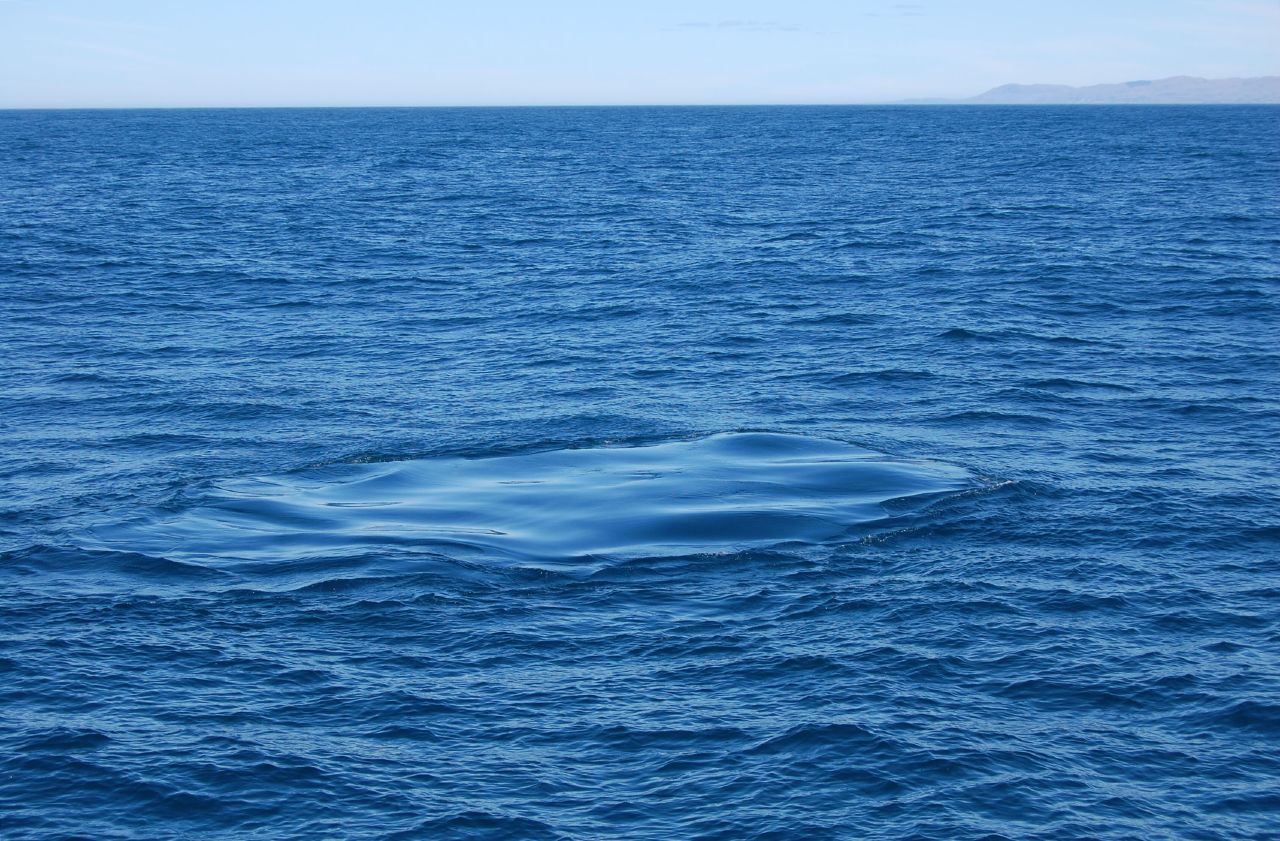 background information about the animals, and now we know the physical relative position of them when they’re talking with each other.”
background information about the animals, and now we know the physical relative position of them when they’re talking with each other.”
To be continued…
Look forward to part two of this interview, in which Dr Gero explains the dangers and concerns facing sperm whales and other marine life in our increasingly trafficked oceans.
Dr Shane Gero completed his doctoral studies at Dalhousie University, Canada, and is currently an FNU Research Fellow at Aarhus University in Denmark. Gero splits his time between Dr. Peter Madsen’s Marine Bioacoustics Lab in Denmark, his human family in Canada, and the sperm whale community off the island of Dominica in the Caribbean.
Photos: Woods Hole Oceanographic Institution, Three Fish Sleeping, Jessie Hodge, Flying Kiwi Tours, Bing, Chelsea Leven
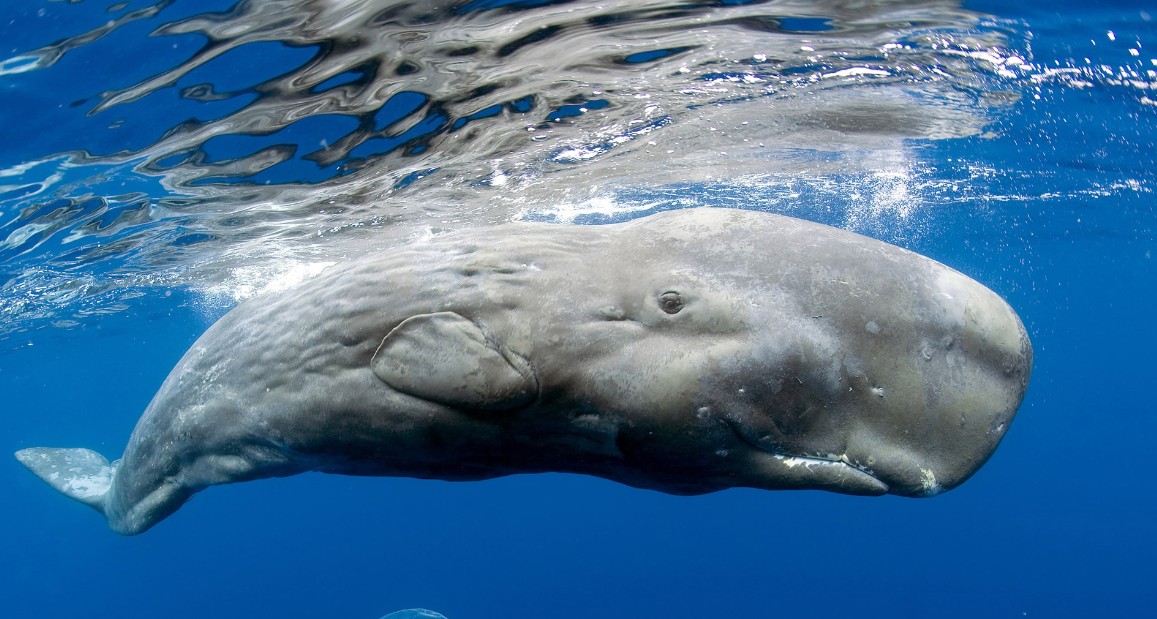
Thank you Mrs Firnschild. Please let us know what the studies are if you come across them again.
The article on whale language reminded me of one on birds from years past which indicated that as with human language, birds had a northern and southern accent.